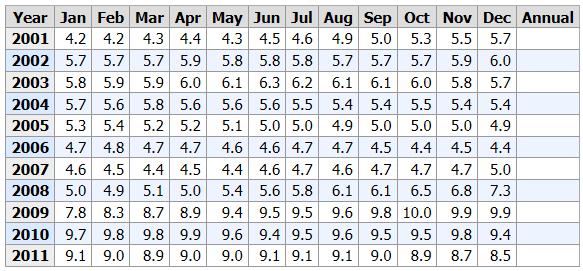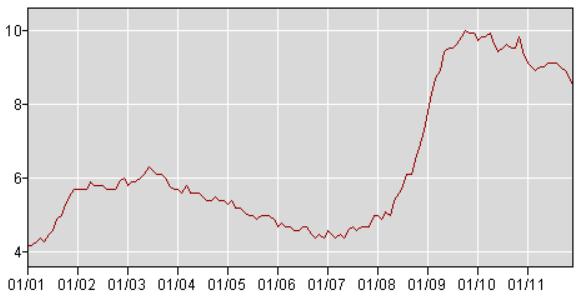Here is my rebuttal of this,
http://critical-thinker.net/?p=1025
First, I would not maintain that idealizing the past is solely a conservative issue. I think you can always find cases where any group idealizes the past. However, in my opinion, the fallacy in your counter argument is of cherry picking. Admittedly, I have not done any statistical analysis of how often conservatives appeal to an idealized past in their rhetoric compared to the other cases you cite. I submit these points to reinforce my point:
Point 1 – Conservative by definition implies a history to conserve. The definition of the word contains my main premise, that conservatives root their identity, heritage and notion of truth in the past. None of the other groups you mentioned call themselves by a name that essentially, in the definition of the very word, implies identification with the past. I find this to be along the lines of a tautology, it is necessarily true that conservatism implies a past to conserve and any group that calls themselves ‘conservative’ sets up an identity with the past…
Conservatism means to conserve the past.
Therefore, a conservative wants to conserve the past.
Point 2 – I think most folks would agree with my presumption that conservatives continually hearken back to a better time that proves their ideology much more than other group’s rhetoric (including the ones you mentioned). I do not think that the numbers are the same for the cases you cite – numbers and proportionality matter. Admittedly, I have not and do not plan to try to come up with stats on this so this depends on people’s own judgment that preferably do not have a vested interest in the outcome of their judgment.
Point 3 – I think this is your admonition that conservatives idealize the past…
“I think a more accurate definition of conservative is someone who wants to conserve tried-and-true traditional institutions and who supports only gradual change, believing that such things are the way they are for good reasons.”
The “tried and true” is exactly what my contention is – the ideal of the “tried and true” may not have really been ‘tried’ or ‘true’. It certainly is an interpretation that is contestable – it may have been ‘tried’ but maybe not the way people think it was tried and the outcome may not have been the ‘true’ that common, un-researched opinions may have assigned to it. Are you suggesting that everything or even most things people think are “tried” and “true” really are – are you? It is the job of propaganda to make/create the content of the ‘tried’ and ‘true’. The reality is not necessarily either and I find typically different.
Point 4 – The graph you cite in your previous post that came from here,
http://scottgrannis.blogspot.com/2011/12/federal-finances-update.html
along with this graph,
http://data.bls.gov/timeseries/lns14000000
and these from my post,
https://www.mixermuse.com/blog/2012/01/06/all-you-need-to-know-about-politics-1-6-12-2/
all demonstrate my point. When Bush took office January 20, 2001 the unemployment was 4.2%. When President Obama took office January 20, 2009 the unemployment rate was 7.8%. Four months later in May it was 9.4%. Your GDP graphs show the almost straight line up at the end of the Bush administration as well. These straight lines up started at the end of the Bush administration and peaked just after Obama took office. They have been coming down ever since. This is the point I am making and you made it for me as well. The economy is like a cruise ship. Don’t forget the recession started as a result of 8 years of a Republican president and 6 years of Republican House and Senate control. A president cannot change the economy the day he gets into office. However, there is substantial evidence that you made and I made and others that things are turning around since Obama got into office – the proof is in the pudding. All you have to do is look at the graphs and where they occur to make my point. If you look at all the data points and do not take one point like “19.7” you will see that the debt went up just as Bush was leaving and Obama was starting. Also, look at the rate of change of spending in the graph on my blog cited above. Here is a better graph from GAO data,
http://www.gao.gov/special.pubs/longterm/debt/
I am not sure where your numbers come from on your graph but they seem a little skewed from the GAO numbers.
Another thing you have not taken into account is discretionary and non-discretionary part of the budget. Discretionary spending is annual spending that the congress and the president have to deal with every year; non-discretionary is mandatory, multiyear spending that has already been committed to by previous administrations (i.e., like food stamps calculated to poverty levels). The non-discretionary portion of the 2011 budget is 59%; the discretionary is 34%.
http://nationalpriorities.org/resources/federal-budget-101/peoples-guide/
What Republicans call Obama-Care has not kicked in yet but the GAO wrote a report that I have read from start to finish that claims it will take 100 billion off the budget over 10 years as compared to doing nothing (can’t cherry pick GAO reports in my opinion – ask my wife – she retired from the GAO). However, the 1 trillion dollars over 10 years of Medicare Part D that was passed by a Republican president (Bush) and Republican dominated House and Senate has already started to hit non-discretionary spending. The non-discretionary part of the budget makes up the lion’s share of the increased debt spending that you see at the end of the Bush administration. Part is this has to do with the wars, the national disasters (FEMA) and more importantly the recession. As more people go into poverty entitlements that were all previously linked to poverty numbers kick in with much higher amounts of spending – nothing to do with President Obama.
As you can see from your graphs and the others ones I have cited, the graphs are taking a turn for the better since President Obama took office but it will take more time than a year to turn it around and a congress that cooperates with the president to get military and entitlement spending down.
Please attach further comments to the original post cited at the top – thanks.
More Interesting Information:
•Since 2001, the U.S. has spent $7.6 trillion in security-related efforts, including: Department of Defense base-line, nuclear weapons, Homeland Security and war.
•From 2000 to 2011, security-related discretionary spending increased 96% versus non-security discretionary spending which increased 39%.
•The 2011 cost of interest on the national debt which is related to military spending is $80 billion. This is equal to the 2012 budgets of Agriculture, Commerce, Interior, Labor and Transportation combined.
•2011 spending on the Iraq War ($47.4 billion) would pay for all the public disaster funding that FEMA disbursed from Fiscal Year 1999 through Fiscal Year 2010.
•2011 spending on the Afghan War ($122 billion) is greater than the 2012 deficits of 42 states and the District of Columbia combined.
http://www.commondreams.org/newswire/2011/09/08-3
http://costofwar.com/en/publications/2011/ten-years-after-911/
and,
http://costofwar.com/en/publications/2011/ten-years-after-911/ten-year-visualization/
PS
I have not researched this data yet but plan to see if this is accurate:
Medicare Part D will add 9.4 trillion over next 75 years to the debt.
http://www.cms.gov/ReportsTrustFunds/
http://krugman.blogs.nytimes.com/2009/12/29/part-d-revisited/
Joe Scarborough reports Medicare Part D will add 7 trillion over 10 years to the debt.
Credit Default Swaps were 50 to 70 trillion during the Bush years.
I will not state that this is good data until I see reputable data sources.

